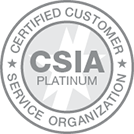When non-profit event planning focuses on interpersonal connections, everybody benefits
Of the many benefits provided by non-profit associations, the annual meeting has proven itself a perennial favorite. For the past two years, meetings have continued to be a highlight, even though they have been fully virtual for countless organizations and haven’t been able to give members the same level of face-to-face networking and socializing they would find at a traditional meeting.
Now that in-person meetings are returning, there is a great deal of excitement among members about getting together with their colleagues in person once again. But because many people have not been spending much time in large groups since the pandemic began, in-person meetings can also, understandably, be anxiety-inducing.
There are numerous creative solutions available to help meeting management teams accommodate members’ needs in the wake of this development. By thinking outside the box and considering alternative ways to provide a well-rounded meeting experience, associations can develop a new incarnation of their annual meeting that is better than ever before.
The Personal Touch
“Everybody is really excited about going back to in-person meetings because they want to talk to human beings,” said Elizabeth Mauro, Senior Director of Client Services at Association Headquarters (AH). “At an in-person meeting, you can develop relationships and make connections just by sitting down to lunch, as opposed to a webinar or online course. The value proposition of the in-person meeting is interpersonal connections.”
To take advantage of the ability to offer such connections, Mauro suggested that meeting planners allow more time for organic interaction. This allows space for attendees to take advantage of in-person networking that they might otherwise not have access to.
“There’s a tendency to want to pack an event schedule to offer the highest possible number of CE credits or the largest possible quantity of educational sessions. But now that there are so many virtual options for education, the people who are coming to an in-person meeting are seeking in-person engagement,” Mauro said.
Some of this engagement can come as part and parcel of the meeting sessions themselves. Associations can encourage speakers to include questions for the audience as part of their programs, start off sessions by asking attendees to introduce themselves to the people around them, and include small-group discussions as a segment of their presentations.
But non-session unstructured time is another great way to give people more social interaction, and it provides several other benefits as well. It allows members to relax and reenergize. It helps alleviate Zoom fatigue, which has lessened people’s ability to focus on content for an extended period of time. And on the flip side of the technology coin, it is increasingly common for attendees to bring with them not just a smartphone but also a laptop, with a tablet for good measure — and to be expected to be available to their coworkers throughout the day via email. Allowing them time to do so helps prevent their being distracted during the sessions themselves.
By shortening the length of their program sessions and offering longer coffee breaks and meal breaks, as well as more frequent breaks overall, associations can continue to provide a wealth of educational content while also giving members an unharried, relaxing experience.
Get the Full Benefits of Break Time
The trick to providing unstructured time that improves a meeting rather than hindering it is, paradoxically, to give the unstructured time a little bit of structure. Whether attendees are using the breaks to make new connections, chat with old friends, or catch up on work emails, you want to keep them in your meeting space.
“If people return to their rooms to charge their phones or have a moment of quiet, they might not come back for a while,” Mauro said.
Fortunately, there are a variety of creative options for an association that wants to provide attendees everything they need within the event space.
- Channel your local coffee shop. Set up long tables with outlets at every seat so people can recharge both literally and figuratively while checking in at work — while still being surrounded by the energy of the conference. (And be sure to confirm in advance that the meeting package with the event space includes enough wireless bandwidth to support the number of expected attendees.)
- Go all out on seating. To whatever extent possible, event management companies should work with the event space on adding extra seating in and around the meeting area, both indoors and out, and rent your own furniture if you have to. Providing clusters of chairs gives attendees the opportunity to sit and chat with one another or just take a quiet, solo break. Outside seating is especially desirable, since any time spent in the fresh air is restorative.
- Set up a quiet room. The bustle and excitement of an annual meeting can create a need to temporarily withdraw and rejuvenate. If you have a small space available, positioning it as a low-lit, computer-free, no-talking zone offers members a mini-getaway.
- Offer arts and crafts. (Really!) “At one of their recent meetings, the National Association of Productivity & Organizing Professionals (NAPO) put a giant coloring sheet and an array of boxes and markers on a table, and all through the day, people were sitting down to color for about 10 minutes,” said Mauro. “They could clear their mind, have a minute, make some idle chitchat with the other people sitting at the table. Often when I would walk by it, they would not be talking to one another at all. They were just having a quiet minute to be in the Zen of coloring.”
- Make the most of mealtime seating. There are several ways you can approach convention meals. Round tables make conversation easier and make it simpler for solo attendees to pull up a chair. Two-person high-tops give old friends a spot to catch up or let someone take a moment alone. Tables with designated special interests (“Hospital Nurses” versus “School Nurses,” for example) can spark new meetings and captivating conversations. And dine-arounds, where people can sign up to go to a local restaurant as a group, allow for additional socializing.
Incorporating ideas like these — and using them as a springboard to develop ideas suited to your own association’s membership — helps you meet attendees where they are while providing them with valuable social contact by encouraging different levels of socializing to fit a range of preferences.
“Thinking about resting and mental well-being is definitely something planners are looking at,” Mauro said. “This isn’t a new development since the pandemic began; however, as a result of the pandemic, it is more important than ever.”




